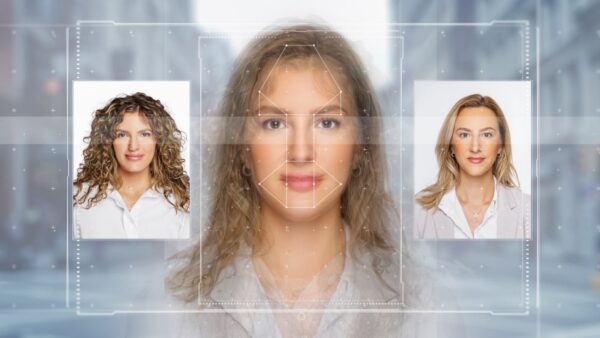Yes!!.. deepfake refers to manipulating audio, video, or images using advanced technology to create fake content that appears to be real. While it is becoming increasingly difficult to distinguish between real and fake media, there are ways to detect deepfakes. Some methods include analyzing facial and body movements, inconsistencies in lighting and shadows, and digital artifacts. However, with the continuous advancement of deepfake technology, detecting them accurately may become even more challenging.
Table of Contents
How Do You Detect Deepfakes Manually and Using AI?

Deepfakes, or digitally altered videos that use artificial intelligence to manipulate facial expressions and movements, have become increasingly prevalent in today’s digital landscape. With the ability to create realistic-looking videos that are almost indistinguishable from the real thing, deepfakes pose a significant threat when it comes to spreading misinformation and fake news. As a result, it is crucial to know how to detect them manually and using AI. In this guide, we will discuss the steps you can take to identify deepfakes and protect yourself from falling victim to their deceptive tactics.
Manual Detection:
- Pay Attention to Audio: One of the signs of a deepfake video is mismatched audio, which may not match the speaker’s lip movements or background noise. This can be an indicator that the video has been manipulated.
- Observe Facial Expressions: Deepfakes often struggle to capture realistic facial expressions, so pay attention to whether something seems off or unnatural about the person’s face in the video.
- Look for Glitches: Some deepfakes may appear flawless at first glance due to advanced technology. However, you may notice glitches or distortions around the person’s face or body upon closer inspection.
- Compare with Other Sources: If you suspect a video may be a deepfake, try finding other sources of the same event or moment and compare them side by side. If there are discrepancies between them, one has likely been manipulated.
- Verify Metadata: Most images and videos contain metadata such as the date created, the camera used, etc. Ensure that this information matches what is being portrayed in the video.
AI Detection:
- Use Deepfake Detection Tools: Many online tools use AI technology to detect deepfakes automatically. Some popular options include Sensity.ai and Deeptrace.
- Look for Eye Movements: People blink and move their eyes naturally in natural videos. However, in deepfakes, these movements may seem irregular and jerky. AI algorithms can easily detect these inconsistencies.
- Analyze Facial Landmarks: Humans commonly see certain facial expressions that align with specific emotions. AI algorithms can identify subtle differences in facial landmarks and movements that may indicate a deepfake.
- Use Reverse Image Search: Reverse image search tools use AI technology to analyze an image or video frame by frame and compare it with other images on the internet. This can help identify where the source material was taken from.
- Train Your AI Model: There are also open-source AI models available that you can train yourself to detect deepfakes accurately. This option requires some technical knowledge but can be highly effective in identifying deepfakes.
In conclusion, detecting deepfakes manually and using AI requires careful observation and advanced technology. Following these steps, you can protect yourself from falling prey to manipulated videos and images online. It is essential to stay informed about the latest advancements in deepfake technology and continue educating yourself on how to spot them effectively.
Frequently Asked Questions on Deepfakes Being Detected
Can we detect deepfakes?
Yes, various techniques and tools have been developed to detect deepfakes. These include analyzing visual cues such as unnatural facial movements or inconsistencies in lighting and shadows, using forensic analysis of the video’s metadata, and utilizing machine learning algorithms to identify patterns in fake videos.
Can you get in trouble for deepfake?
Yes, creating and sharing deepfake content can have serious legal consequences. Depending on the context and intent of the video, individuals can face charges such as identity theft, defamation, copyright infringement, or fraud. Additionally, some countries have specific laws prohibiting creating and distributing deepfake content.
Can deepfake audio be detected?
Similar techniques to detect visual deepfakes can also be applied to audio deepfakes. In addition, advanced audio forensics software can analyze subtle changes in a person’s voice to determine if it has been manipulated or synthesized.
How do you spot AI fakes?
There are a few ways to spot AI fakes, such as deepfakes. Some signs to look out for include unnatural facial movements or expressions, strange background noises or glitches in the video or audio, inconsistencies with lighting and shadows, and mismatched lip-syncing with audio. It is also helpful to compare the content with known authentic material from the same source.
Conclusion
In conclusion, while deepfake technology continues to advance and become more convincing, there are still ways in which it can be detected. With the help of advanced AI algorithms, researchers are constantly developing new methods to identify and combat deepfakes. Education and critical thinking skills can also play a crucial role in detecting false information. However, as deepfake technology evolves, individuals must remain vigilant when consuming media content. It is clear that while deepfakes may pose a threat, they can still be detected with proper measures in place.
